Art World
A Gallery Volunteer’s Sleuthing Leads to the Reunion of a 16th-Century Altarpiece
The altarpiece will be displayed as one for the first time in decades at Compton Verney.
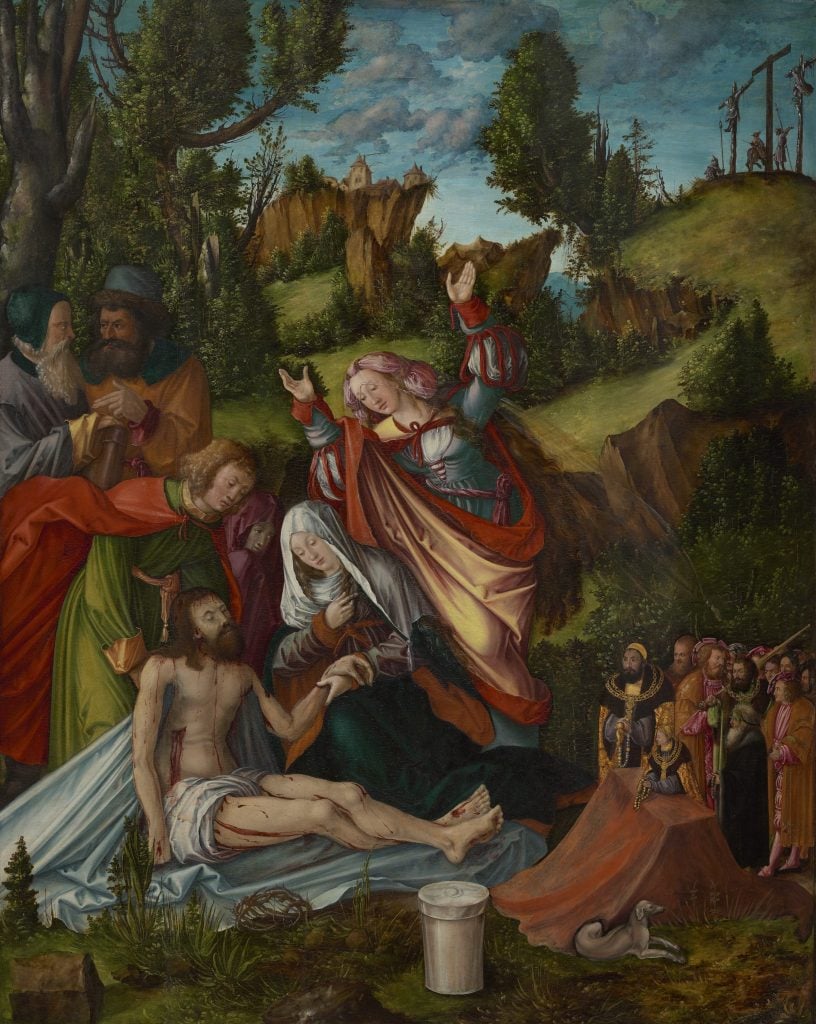
Compton Verney, a manor house-turned-art gallery in the Warwickshire countryside has a rich and capacious collection—grand paintings from the Neapolitan Golden Age, intricately worked Chinese bronzes dating back three millennia, the U.K.’s largest offering of folk art.
The item that most intrigued volunteer guide Christine Cluley, however, was the pair of 500-year-old panels that once enclosed an altarpiece lamentation scene. Part of the appeal was their mystery. The centerpiece was absent and the painter was unknown, referred to only obscurely as the “Franconian Master.”
The name points to a region known today as Bavaria, where, in the 16th century, the German Renaissance was in full bloom. Cluley took up the task some 14 years ago and step-by-step retraced the work’s provenance. Crucially, her research also helped identify the missing centerpiece: The Lamentation of Christ with a Group of Donors, now held by National Galleries of Scotland.
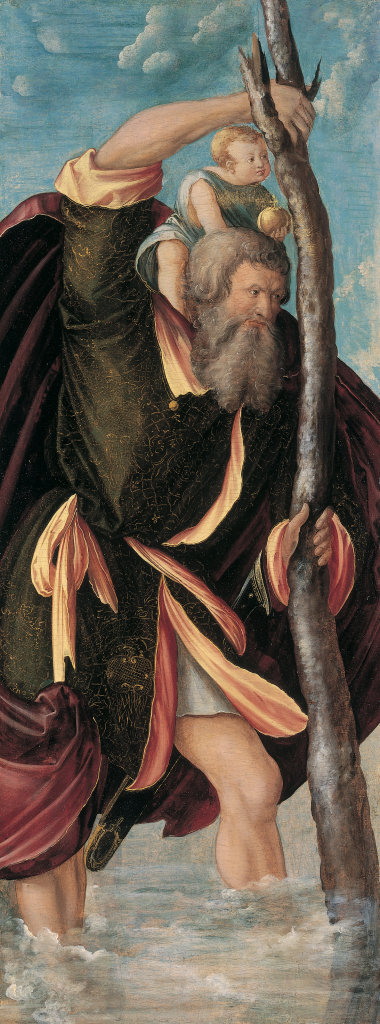
Unknown Franconian Artist, Saint Christopher (16th century). Photo courtesy Compton Verney.
On the back of Cluley’s research, including digging into archives and auction sale catalogues in the UK and Germany, the centerpiece has been reunited with its wings for a temporary display at Compton Verney set to run through February 2025.
“It has been an ambition of ours to reunite the wings in our collection with the central panel for a number of years,” Compton Verney said via email. “We have a number of fragments of altarpieces and we were able to bring these together in one room.”
Compton Verney is also cautiously putting forward the names of two possible artists: Hans Baldung and Wolfgang Traut. Both men were keen followers of the work of Lucas Cranach and Albrecht Dürer, whose name once erroneously graced the wings.
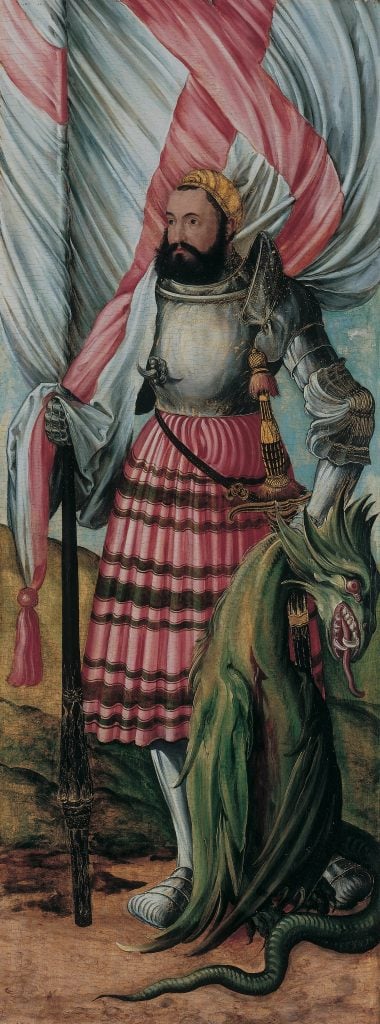
Unknown Franconian Artist, Saint George (16th century). Photo courtesy Compton Verney.
Commissioned following the death in 1527 of Kasimir Friedrich, who ruled the Ansbach principality in the Holy Roman Empire, the panels are painted on both sides: St. Catherine and St. Barbara on the outside; St. Christopher and St. George on the inside.
Beneath St. Catherine’s flowing drapery and sword, the work is dated 1519, i.e. prior to the altarpiece commission. This suggest the panels previously belonged to another altarpiece and cut down to size. The inside saints connect symbolically with Kasimir Friedrich. St. Christopher is the patron of traveling and the ruler died while away in Hungary. St. George evokes the name of his brother, who succeeded him.
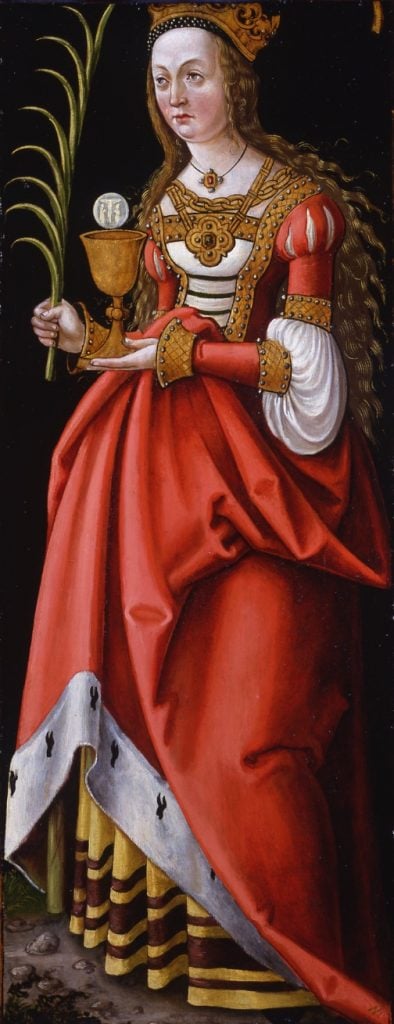
Unknown Franconian Artist, Saint Barbara (16th century). Photo courtesy Compton Verney.
The centerpiece is a dynamic and brightly colored work capturing the moment after Jesus was removed from the cross, which lingers gray and ominous in the background. The Virgin Mary kneels tenderly beside Jesus, while, behind her, Mary Magdalene throws her hands aloft in a spell of despair, her ointment jar prominently in the foreground. Flashes of red drapery connect with the blood spilling down Jesus’s legs and torso; the blue garment upon which he rests echoes the sky.
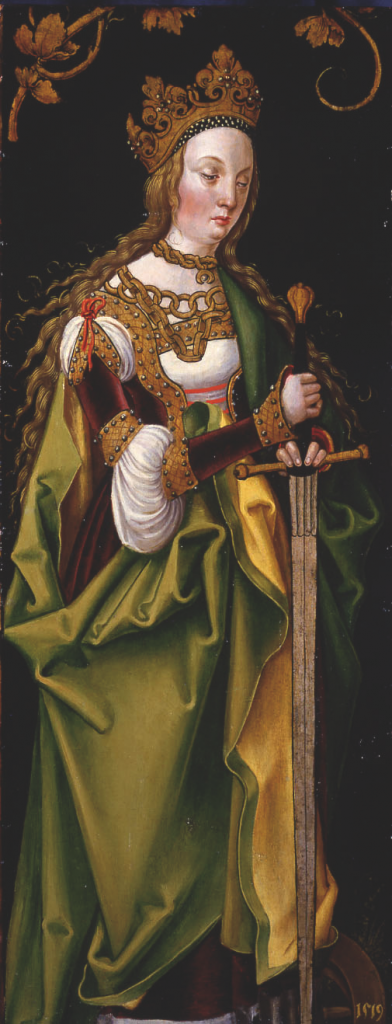
Unknown Franconian Artist, Saint Catherine (16th century). Photo courtesy Compton Verney.
The donors are presented in a different perspective and stood beside the Kasimir Friedrich’s coffin. Two boast the insignia of the Order of the Swan, popular among the Franconia’s aristocracy.
It’s the first time in 30 years the three panels have been placed together. In a peripatetic journey, they entered a Berlin auction in the mid-1800s after the death of the Prussian Postmaster. Somehow, the altarpiece ended up in an English stately home in the 1920s before entering a village Shropshire church. In 1993, it was separated and sold at auction.
“Reunited: The Lamentation Altarpiece” is on view at Compton Verney, Warwickshire, the U.K., through February 28, 2025.





